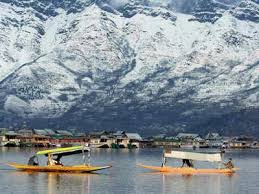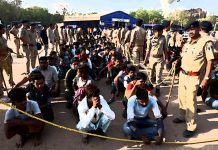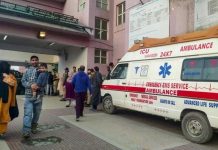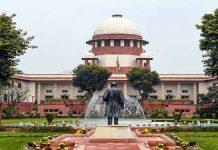While Jammu division has witnessed revival of militancy over the last three years, Kashmir Valley has seen a boom in tourist influx. The fresh data announced by the Centre has pegged the tourist numbers visiting the Valley at one crore by June this year. A report by Riyaz Wani

While Jammu division has witnessed revival of militancy over the last three years, Kashmir Valley has seen a boom in tourist influx. The fresh data announced by the Centre has pegged the tourist numbers visiting the Valley at one crore by June this year. Speaking in Rajya Sabha, Minister of State for Home Affairs Nityanand Rai attributed the growth in the sector to the abrogation of Article 370, which, according to him, had helped bring peace to the region.
This has increased tourism’s contribution to the Gross State Domestic Product (GSDP) from 7.84 percent in 2019-20 to 8.47 percent in 2022-23.
According to Rai, a total of 1,08,41,009 tourists visited J&K till June. In previous years, the numbers were 34,70,834 in 2020, 1,13,14,884 in 2021, 1,88,64,332 in 2022, and 2,11,24,874 in 2023.
Rai credited the J&K government’s initiatives for this growth, including the Tourism Policy 2020 and the Jammu and Kashmir Industrial Policy 2021, which granted industry status to the tourism sector, enabling it to avail incentives. The homestay permits to accommodate more tourists have also helped and benefited locals economically.
Additional measures such as the Jammu and Kashmir Film Policy 2021, Houseboat Policy 2020, and the identification of 75 off-beat destinations have also contributed to the transformation. Border tourism has gained momentum, with previously lesser-known locations such as Gurez, Keran, Teetwal, and R S Pura opening up for tourists. Adventure and golf tourism are also on the rise.
But the excessive focus on fewer resorts are drawing tourists away from other equally scenic places; some of them like Aharbal, Yusmarg, Tosamaidan, Gurez, historic old city in Srinagar have only recently found a prominent place on the tourist map of Kashmir.
The tourism sector forms 6.8 percent of Kashmir’s GDP and employs 2 million people. The sector, as such, has the potential to shore up the union territory’s beleaguered economy.
In recent years, the J&K administration has made efforts to bring more tourists to the region. Once the successive Covid lockdowns were over, the administration launched promotional efforts within and outside the country to attract tourists back to the Valley. The government has added more tourist places, earmarking another 75 tourist destinations for tourism. The homestay facilities have attracted tourists to far-off areas once considered a no-go zone due to security concerns. The facility was introduced by the government in 2022, and it has boosted border and rural tourism.
Authorities have recently opened the Pir Panjal region from the Yusmarg end in South Kashmir for trekking. Similarly, the Athwatoo area in Bandipora, located in the Shamsbari range — once notorious for infiltration routes — has become accessible to tourists. This shift has led high-end tourists from the rest of the country to explore beyond traditional spots like Gulmarg, Pahalgam, and Sonamarg, opting instead for trekking and visiting border areas. Gurez is one such area. Hitherto out of bounds for tourists due to militancy, Gurez is witnessing tourist inflow.
However, fresh challenges have emerged: for example, the surge in militant violence in the Jammu division. This has already led to the United States asking its nationals not to travel to Manipur, Jammu and Kashmir, the India-Pakistan border, and parts of central and eastern parts of India where Naxalites are active. This will affect the inflow of high spending foreign tourists to Kashmir.
On a positive note, according to the Union Minister for Railways, Ashwini Vaishnaw, the long-awaited Udhampur-Srinagar-Baramulla Rail Link project in the union territory is nearing completion and very soon it will be inaugurated by Prime Minister Narendra Modi. This would facilitate more tourist inflow to the Valley and help boost the economy.













